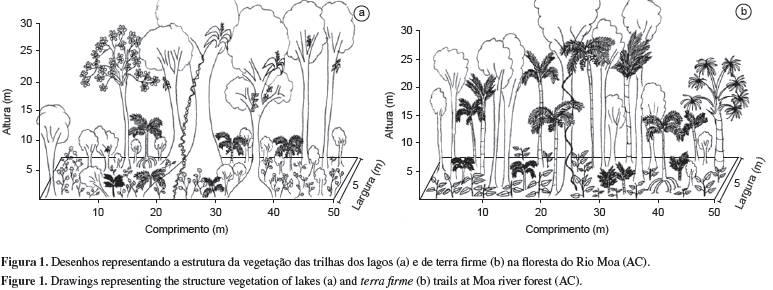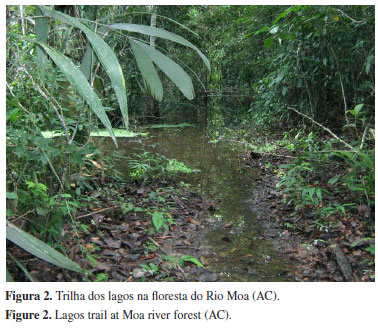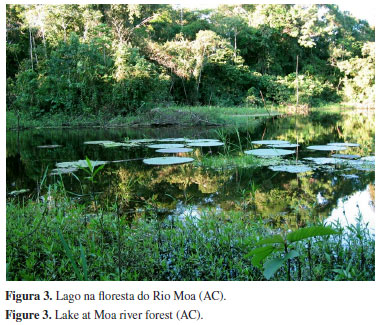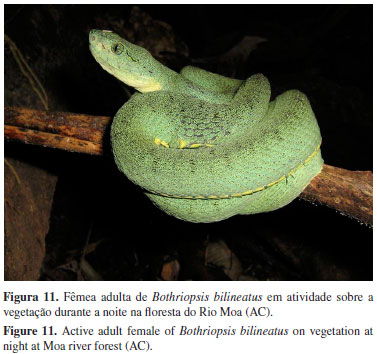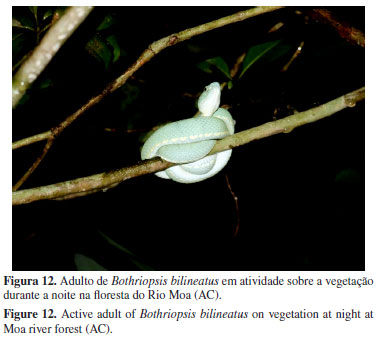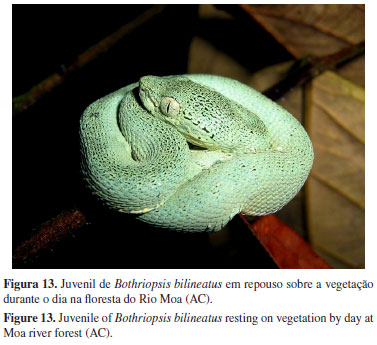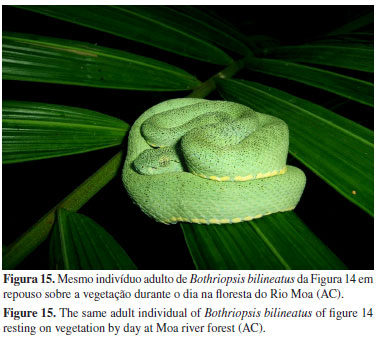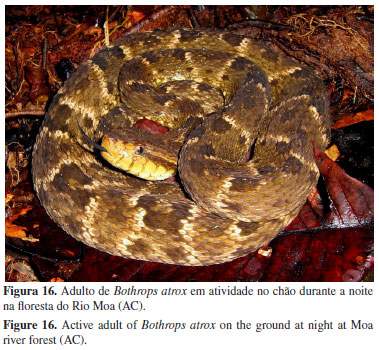The snakes Bothriopsis bilineatus and Bothrops atrox are sympatric vipers in the Amazon. While B. atrox is common, Bothriopsis bilineatus is considered relatively rare. Both species are dietary generalists, with B. atrox foraging mostly on the ground while B. bilineatus is more arboreal. Here, we describe habitat use and activity patterns for these two snakes in Amazonian forest near the Moa River, Cruzeiro do Sul (Acre). This study was based on observations during both time constrained visual searches and opportunistic encounters along trails that included both seasonally flooded and terra firme forests. During a total of 360 hours of time constrained visual search, 11 B. bilineatus and six B. atrox were found, while one B. bilineatus and six B. atrox were found during opportunistic encounters. All 12 B. bilineatus were found on vegetation above the ground, while only five B. atrox were on vegetation, and these were all juveniles. Thus, during time constrained visual searches B. bilineatus was more common (0.03 snake/hour) than B. atrox (0.016 snake/hour). These two species use different habitats. Bothriopsis bilineatus was most commonly found in upland terra firme forests, with many palms and free from seasonal floods. Bothrops atrox was most commonly found in lower, wetter seasonally flooded areas. Perhaps structural differences in the vegetation in these two forest types influence the distribution of these two species, possibly due to a related influence on prey abundance, besides historical factors. Both species are found more often during the rainy season, rarely being found during the dry season, when their amphibian prey are less abundant. In most of the Amazon, B. bilineatus seems less common than B. atrox, but in the present study, the former was the most frequent snake during time constrained visual search.
Western Amazonia; Reptilia; pitvipers; lanceheads; microhabitat; snake behavior

